Segmental large bone defects lead to disability and impose significant health and cost burdens.
Motor vehicle traumas
2.3M
Blast injuries
40k

Falling from Heights
50k

Tumor resection
5.2M

Revision surgeries
40k

Bone infection
50k
Current treatment options are complicated and not very effective!
NO STANDARD TREATMENT PROTOCOL EXISTS for segmental large bone defects
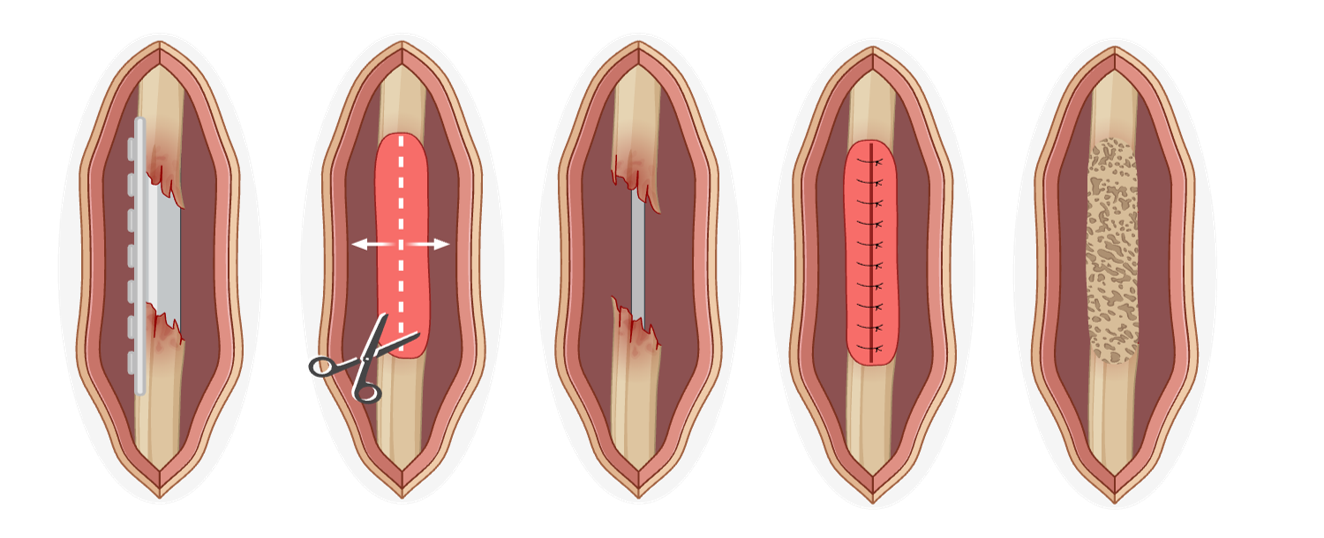
Masquelet Technique
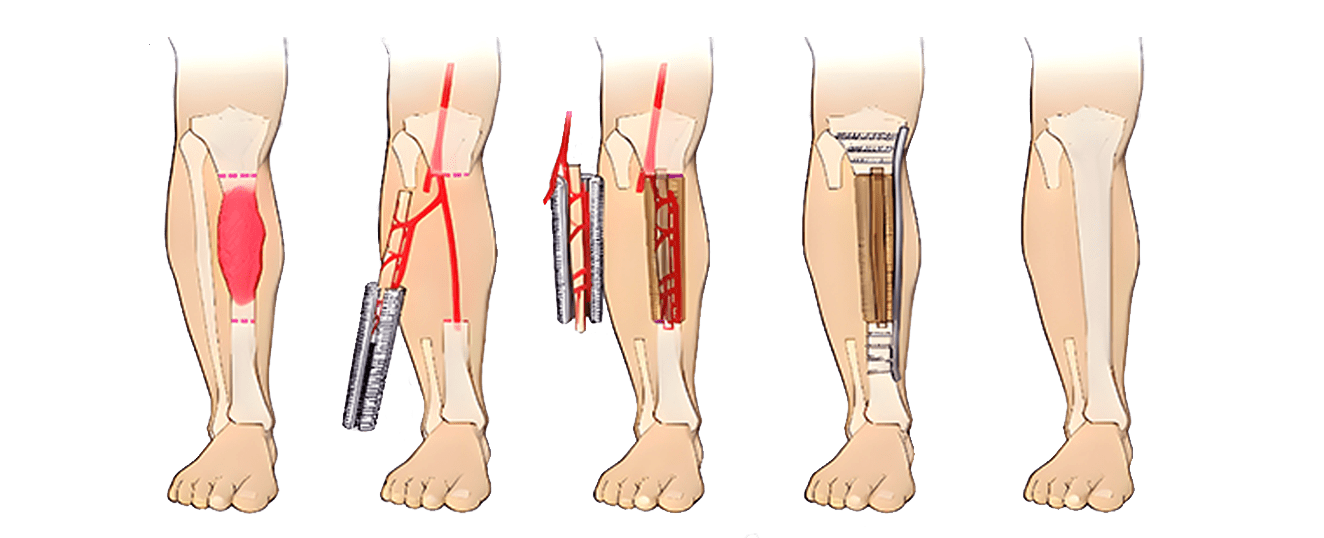
Vascularized Fibula Grafting
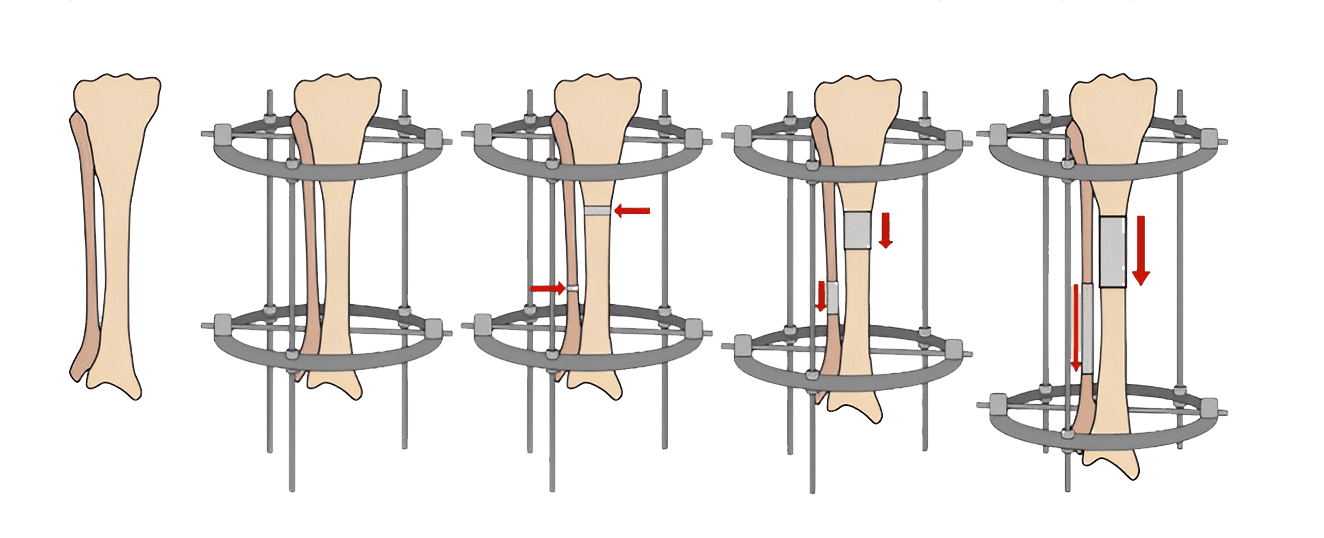
Llizarov Technique
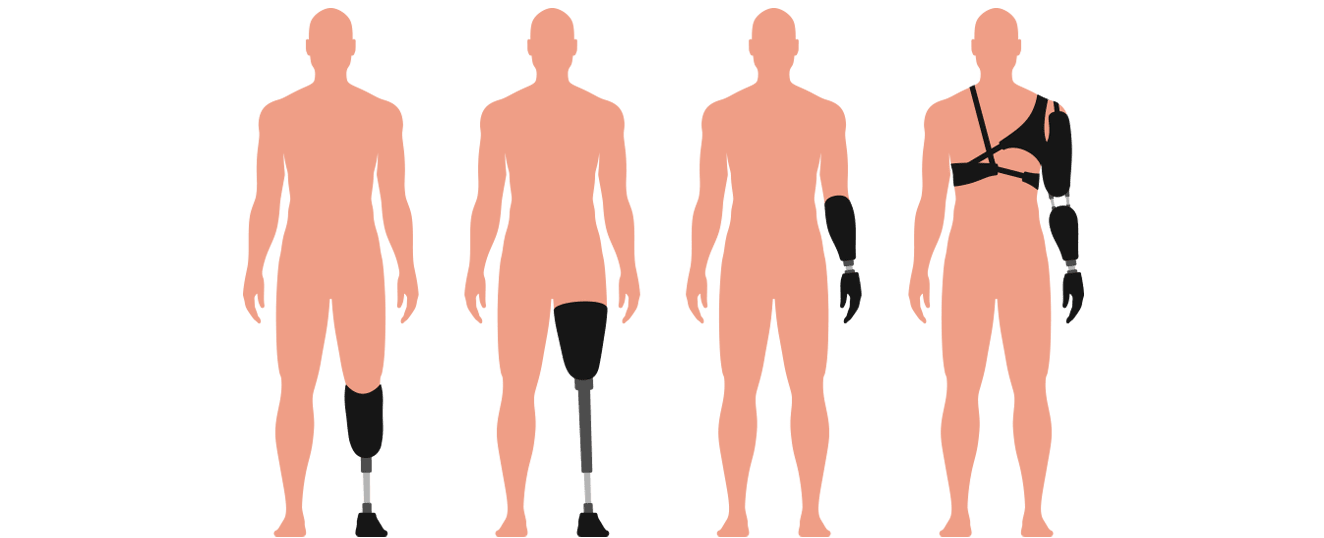
Amputation
They all include:
- Multiple significantly complicated surgeries
- Variable success rates
- Long-term disabilities
Current treatment options are complicated and not very effective!
NO STANDARD TREATMENT PROTOCOL EXISTS for segmental large bone defects

Masquelet Technique

Vascularized Fibula Grafting

Llizarov Technique

Amputation
They all include:
- Multiple significantly complicated surgeries
- Variable success rates
- Long-term disabilities
An example of the issue Tibial large segmental fractures:
Over two years post-index:

7 out of 10, required at least 1 additional admission
1 out of 10, required 4 or more additional admissions
$89k
Average Reimbursement per patient
$137k
Average Hospital costs per patient
Bone grafting procedures are gold-standardBut not practical for segmental large bone defects
Half a million bone grafting procedures are performed annually in the United States.
An annual healthcare expenditure of $5 billion
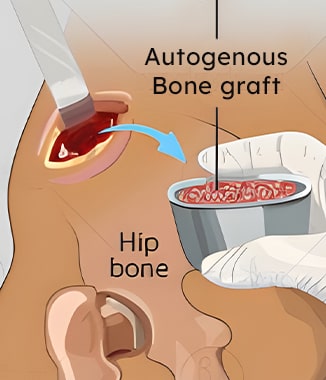
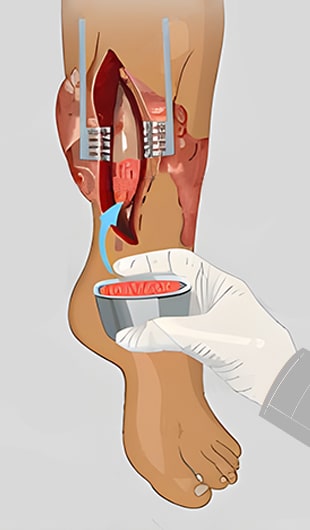
Small Bone Defect

Large segmental Bone defect
Bone grafting easily feasible

